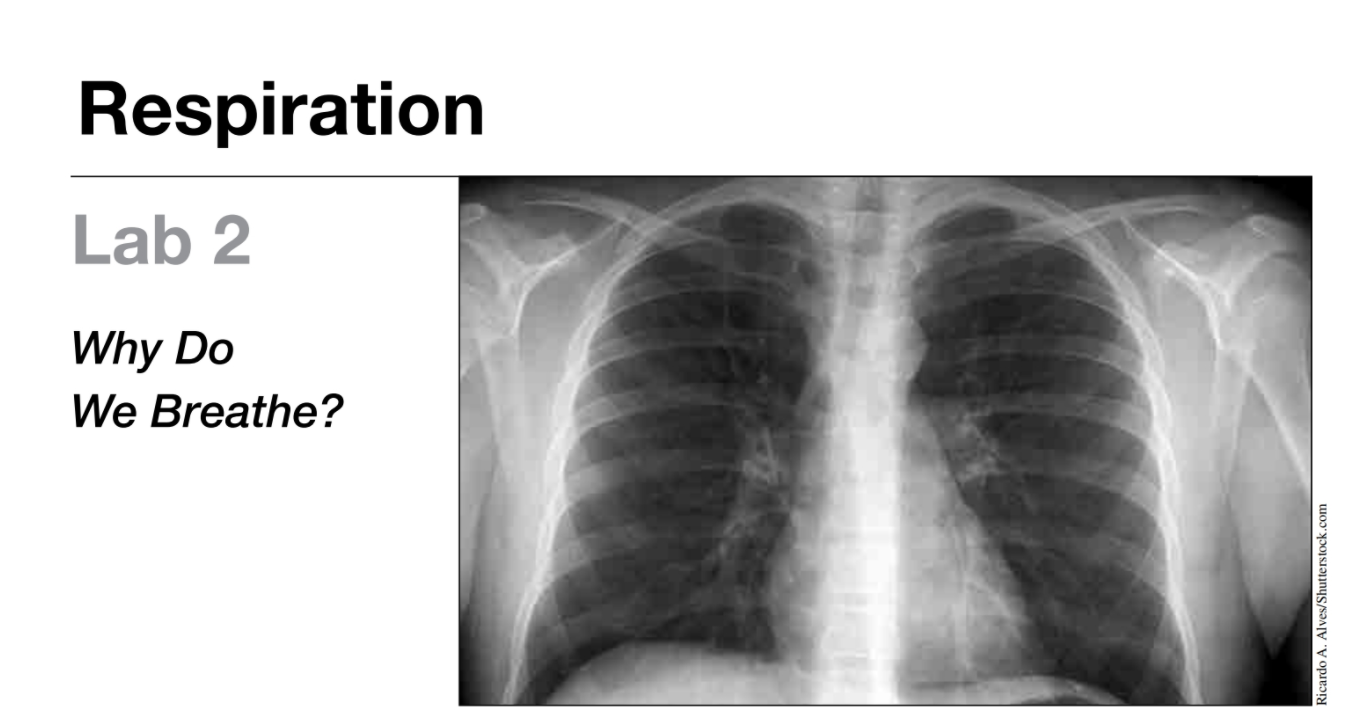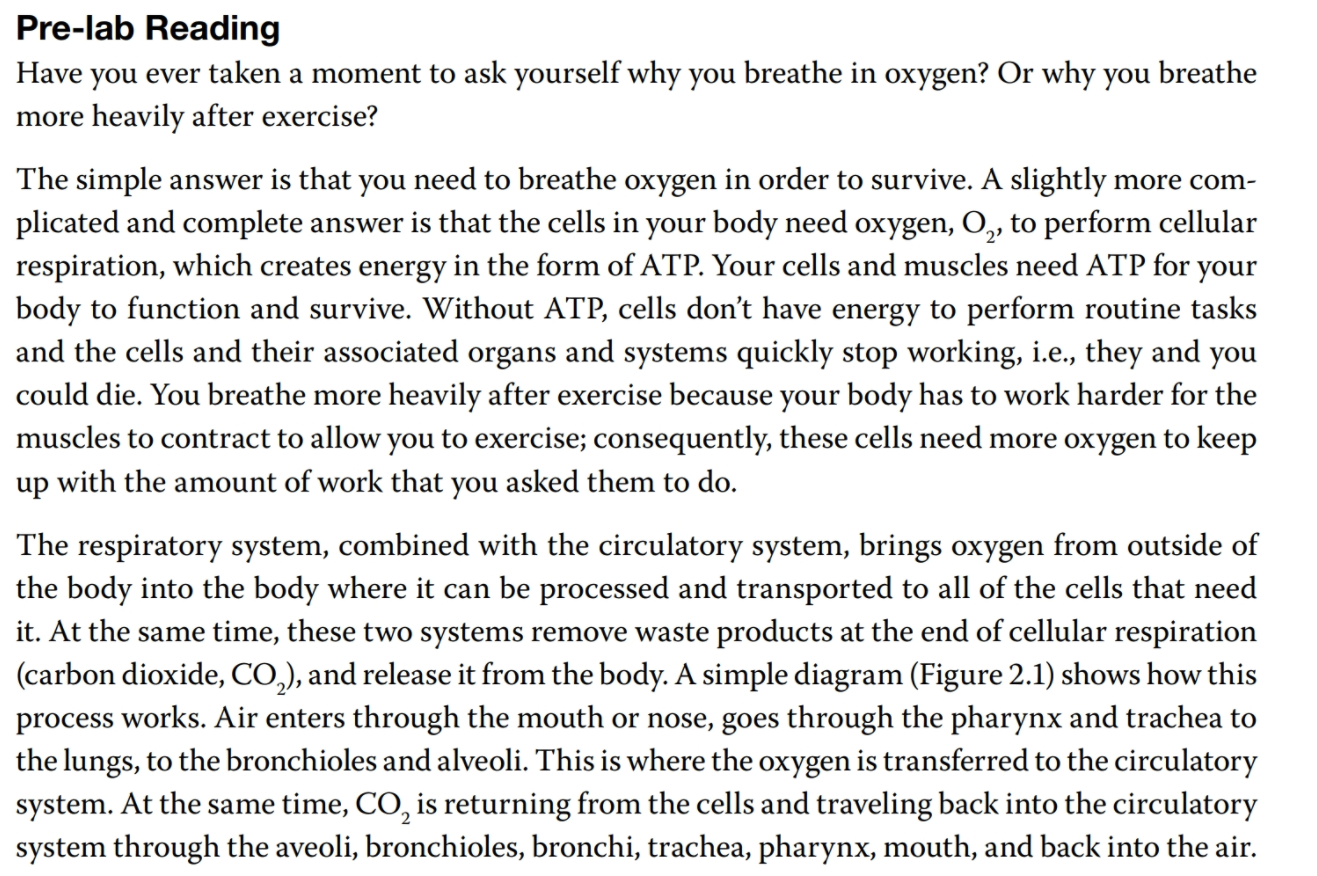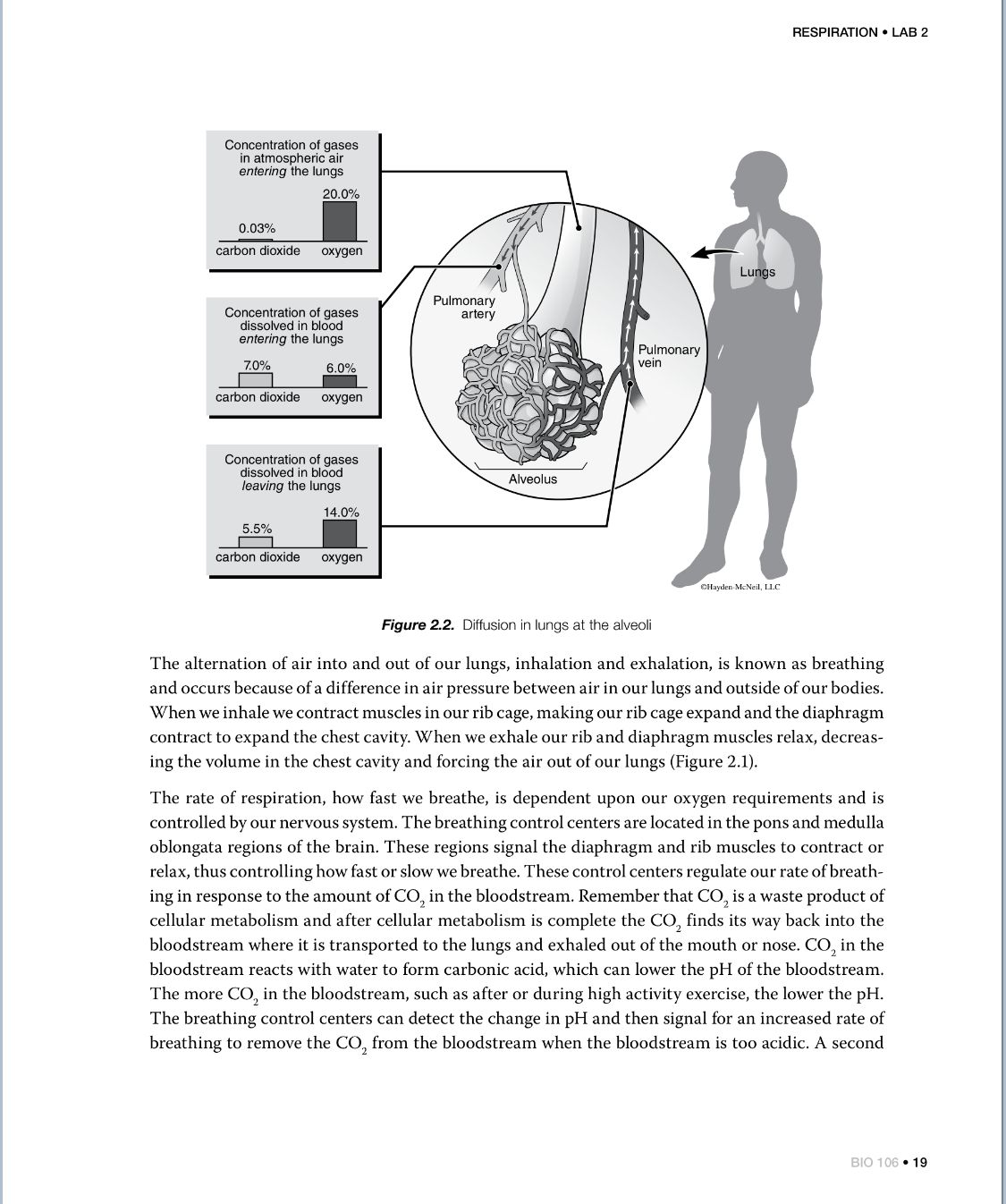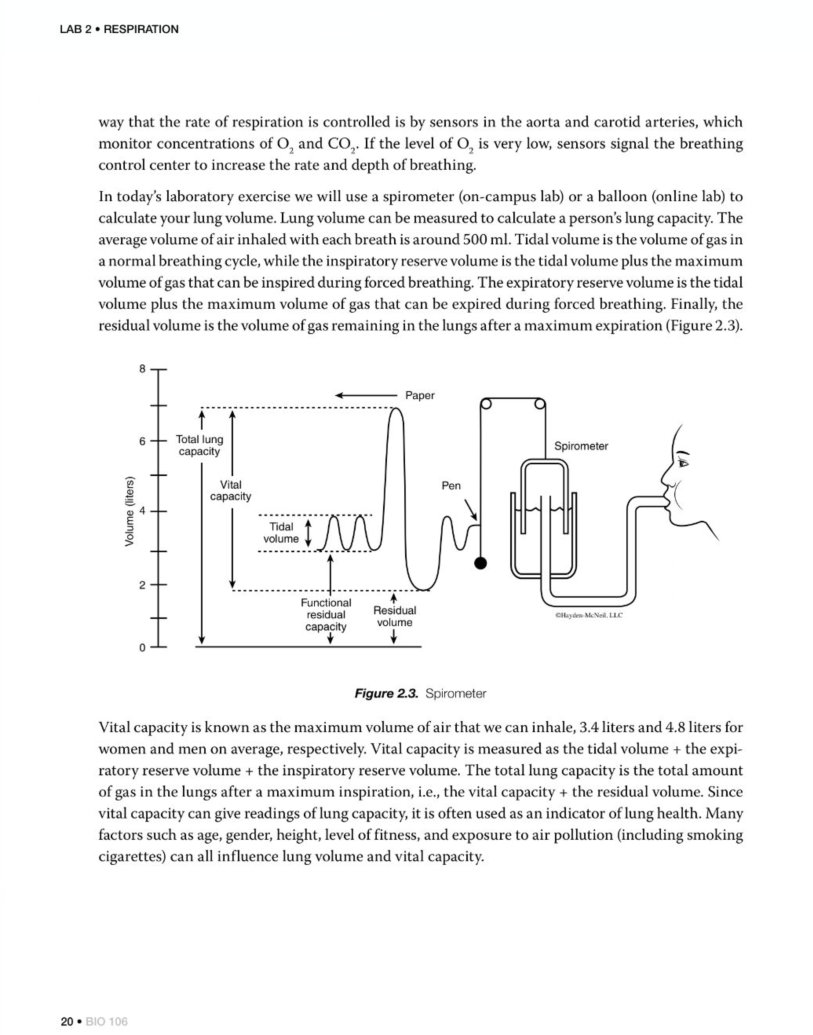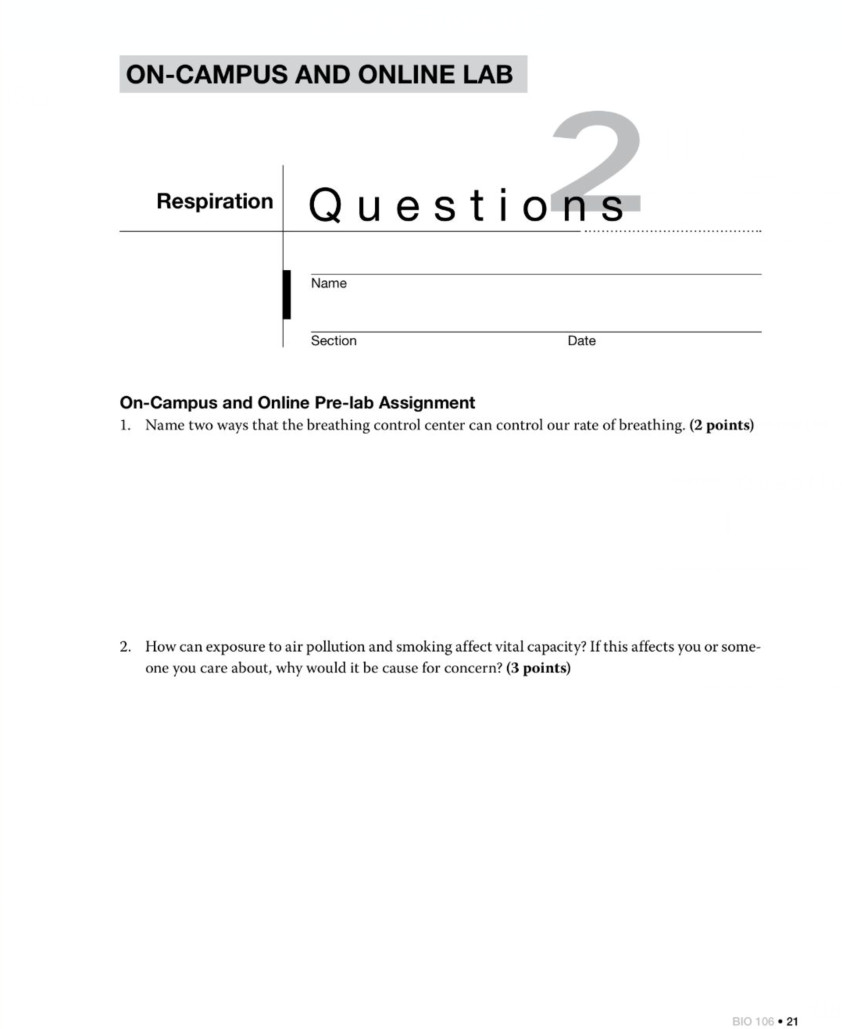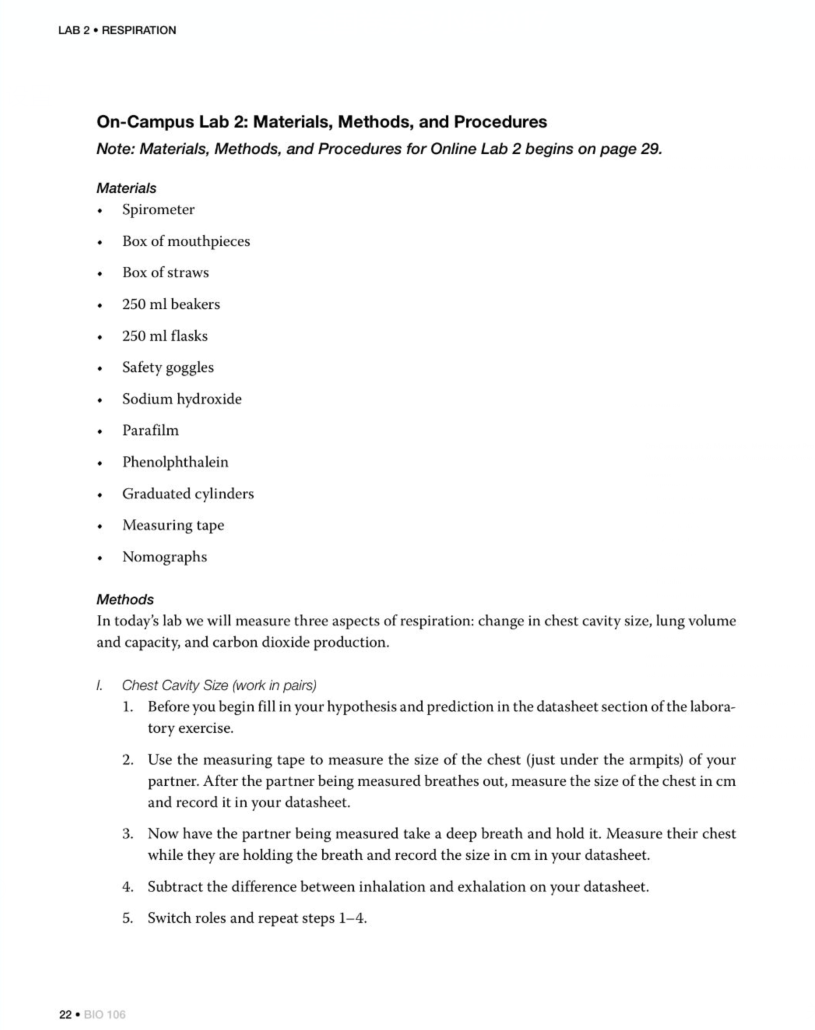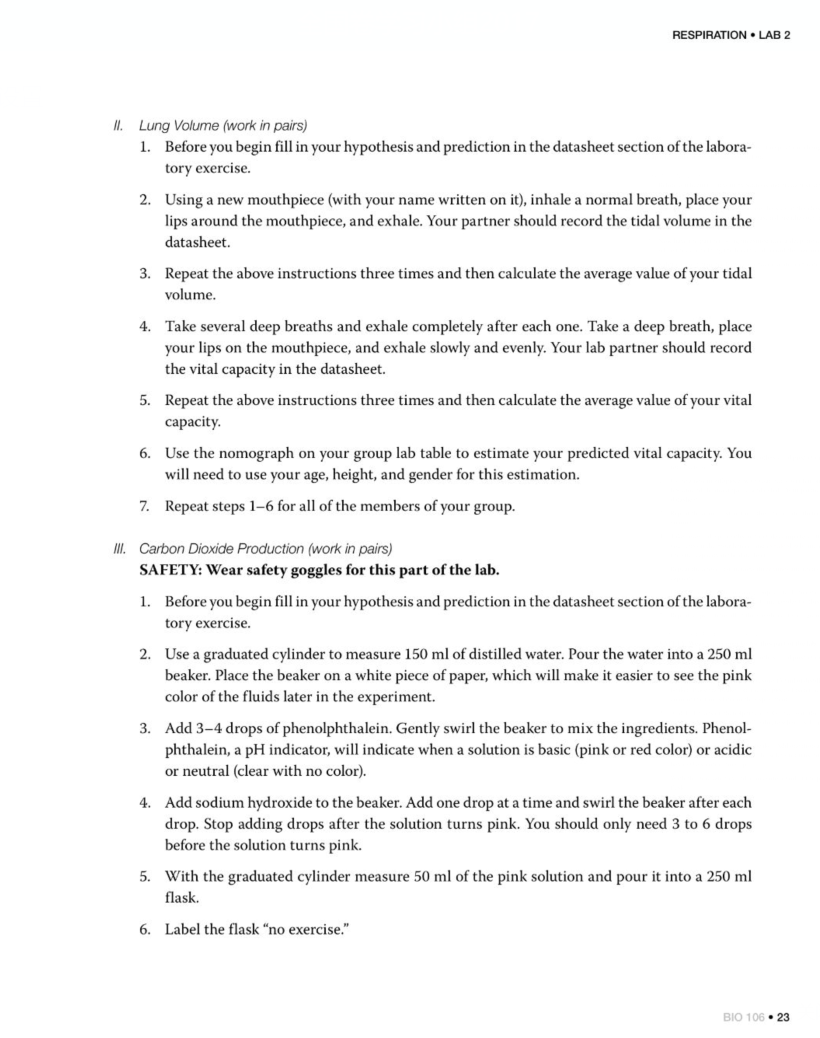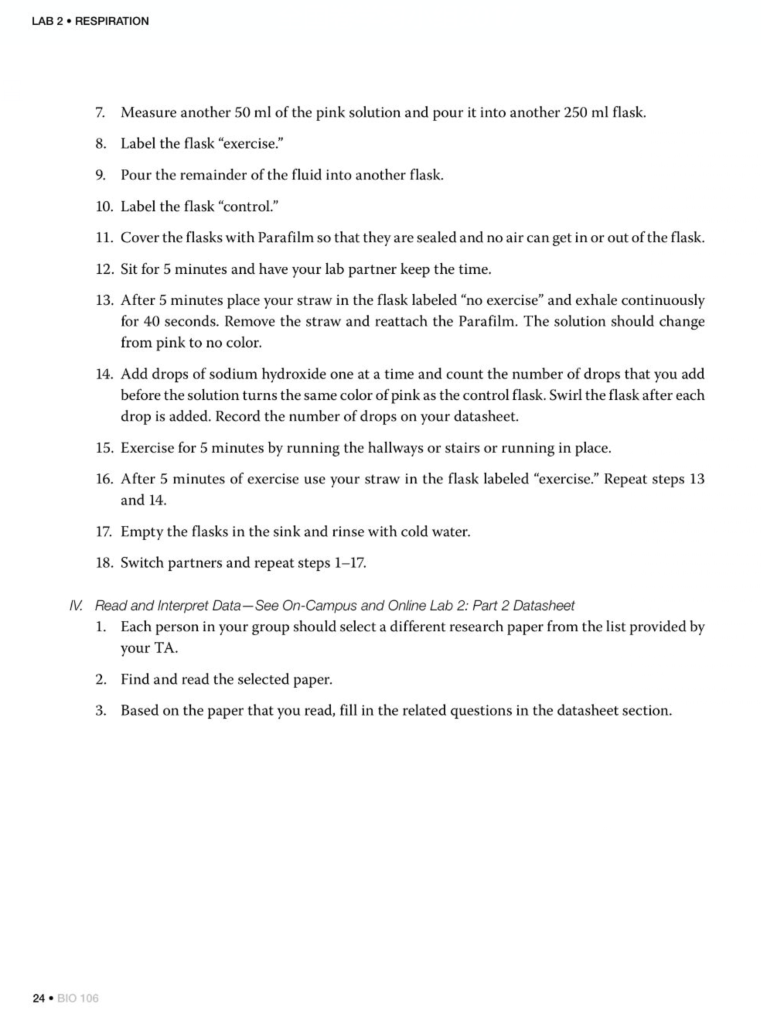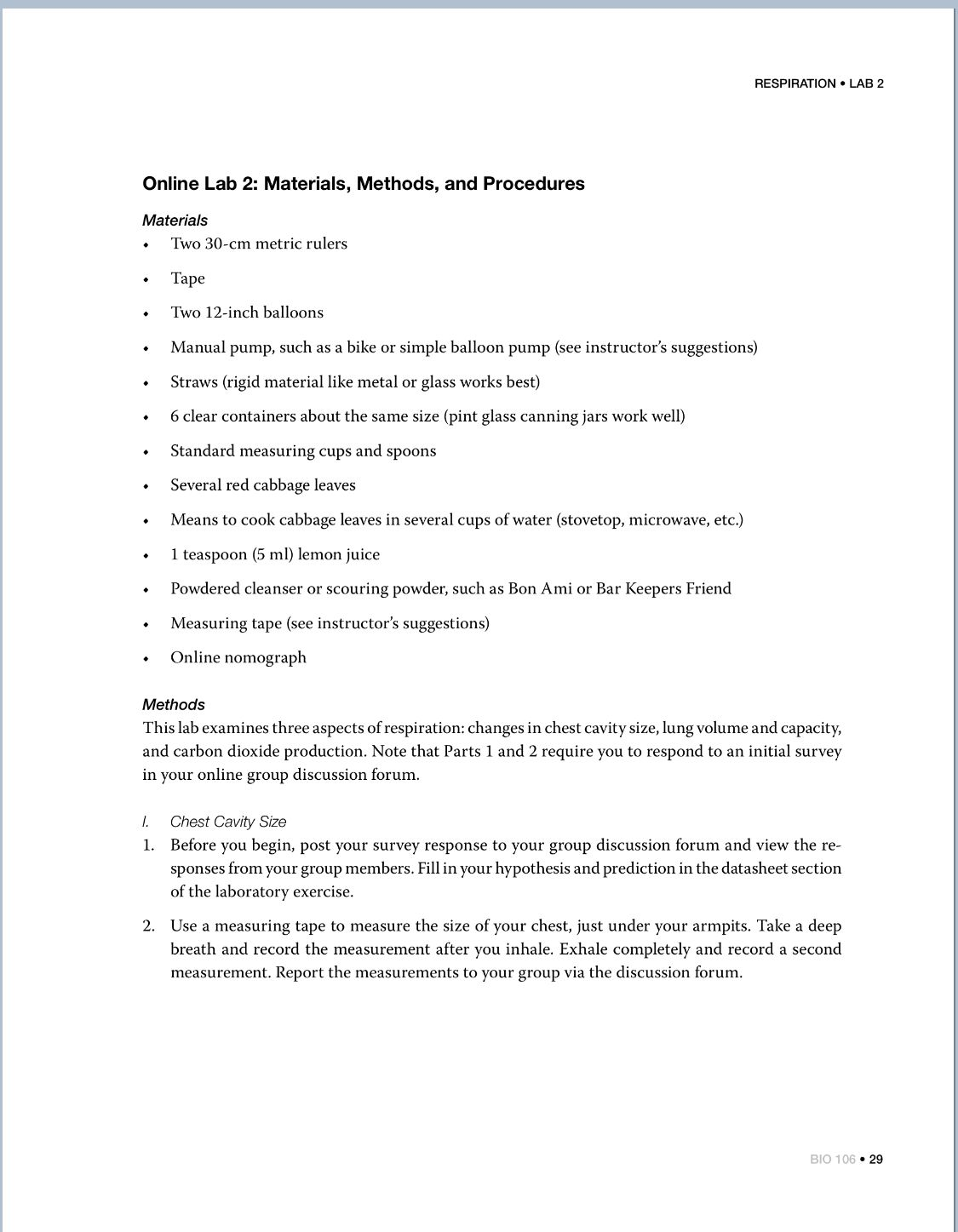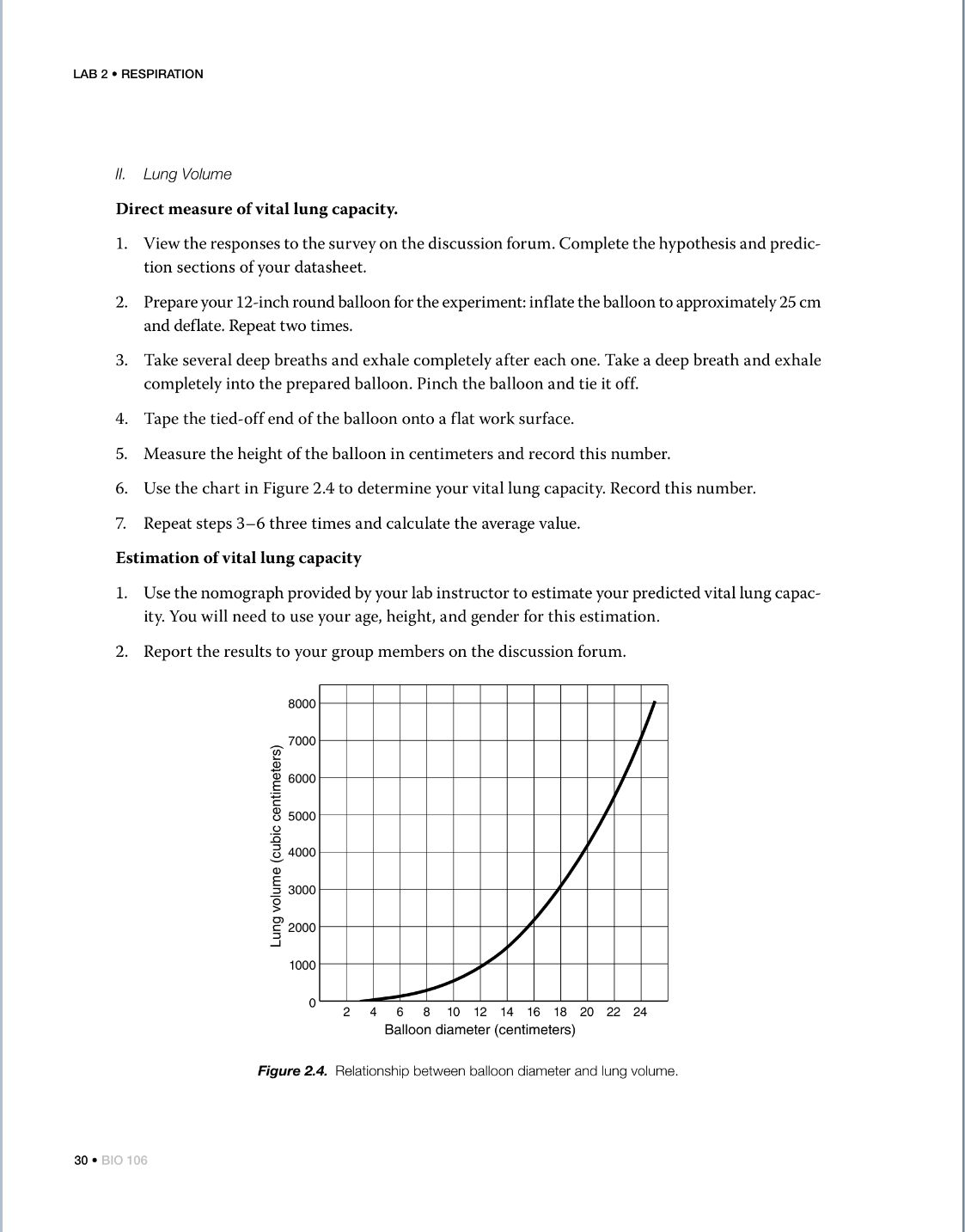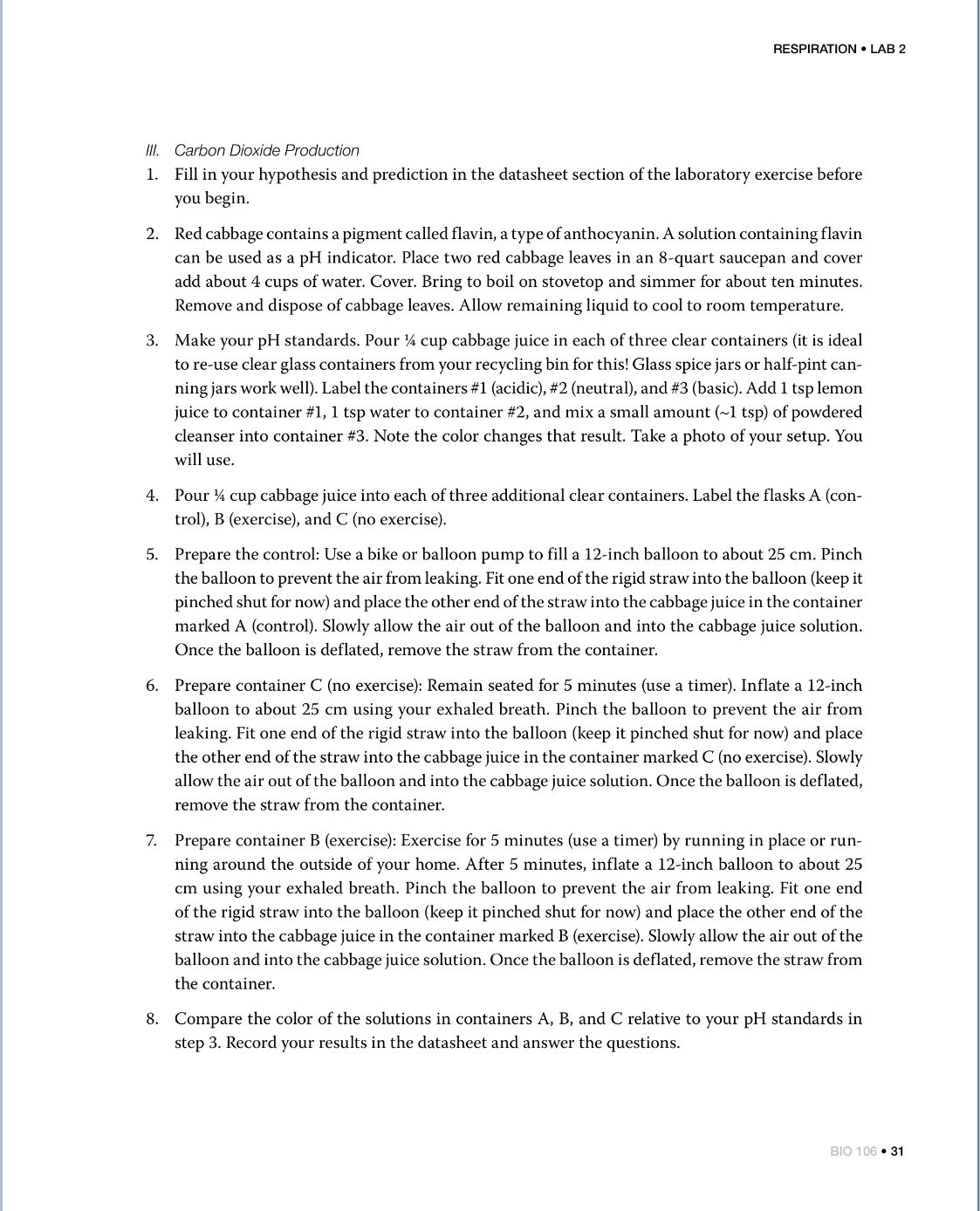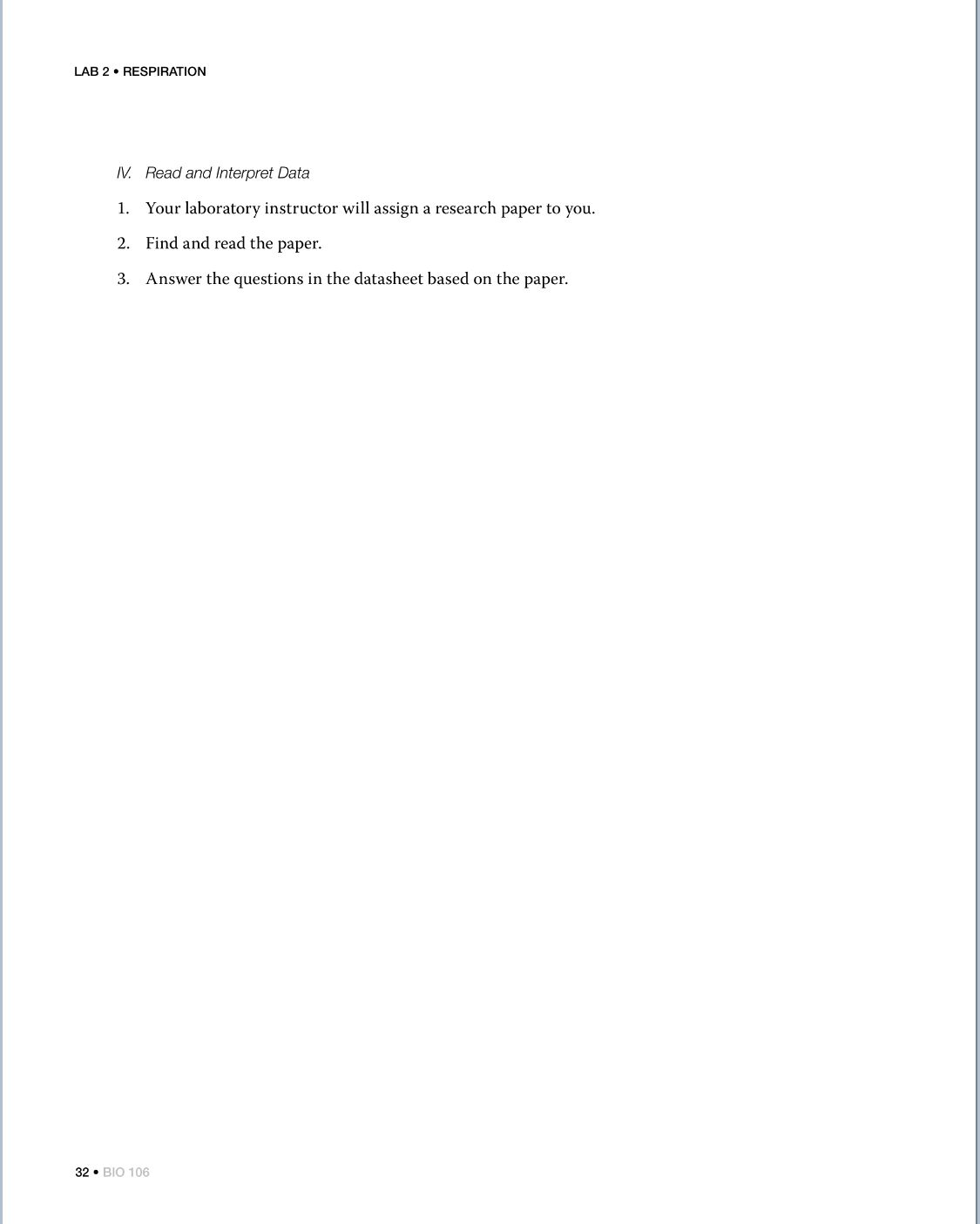Have you ever taken a moment to ask yourself why you breathe in oxygen? Or why you breathe more heavily after exercise?
The simple answer is that you need to breathe oxygen in order to survive. A slightly more com-plicated and complete answer is that the cells in your body need oxygen, O2
, to perform cellular
respiration, which creates energy in the form of ATP. Your cells and muscles need ATP for your body to function and survive. Without ATP, cells don’t have energy to perform routine tasks and the cells and their associated organs and systems quickly stop working, i.e., they and you could die. You breathe more heavily after exercise because your body has to work harder for the muscles to contract to allow you to exercise; consequently, these cells need more oxygen to keep up with the amount of work that you asked them to do.
The respiratory system, combined with the circulatory system, brings oxygen from outside of the body into the body where it can be processed and transported to all of the cells that need it. At the same time, these two systems remove waste products at the end of cellular respiration (carbon dioxide, CO2
), and release it from the body. A simple diagram (Figure 2.1) shows how this
process works. Air enters through the mouth or nose, goes through the pharynx and trachea to the lungs, to the bronchioles and alveoli. This is where the oxygen is transferred to the circulatory system. At the same time, CO2
is returning from the cells and traveling back into the circulatory system through the aveoli, bronchioles, bronchi, trachea, pharynx, mouth, and back into the air.
The alternation of air into and out of our lungs, inhalation and exhalation, is known as breathing and occurs because of a difference in air pressure between air in our lungs and outside of our bodies. When we inhale we contract muscles in our rib cage, making our rib cage expand and the diaphragm contract to expand the chest cavity. When we exhale our rib and diaphragm muscles relax, decreas-ing the volume in the chest cavity and forcing the air out of our lungs (Figure 2.1).
The rate of respiration, how fast we breathe, is dependent upon our oxygen requirements and is controlled by our nervous system. The breathing control centers are located in the pons and medulla oblongata regions of the brain. These regions signal the diaphragm and rib muscles to contract or relax, thus controlling how fast or slow we breathe. These control centers regulate our rate of breath-ing in response to the amount of CO2
in the bloodstream. Remember that CO2 cellular metabolism and after cellular metabolism is complete the CO2 bloodstream where it is transported to the lungs and exhaled out of the mouth or nose. CO2
finds its way back into the in the
bloodstream reacts with water to form carbonic acid, which can lower the pH of the bloodstream. The more CO2
in the bloodstream, such as after or during high activity exercise, the lower the pH.
The breathing control centers can detect the change in pH and then signal for an increased rate of breathing to remove the CO2
from the bloodstream when the bloodstream is too acidic. A second
way that the rate of respiration is controlled is by sensors in the aorta and carotid arteries, which monitor concentrations of O2
and CO2 . If the level of O2 control center to increase the rate and depth of breathing.
In today’s laboratory exercise we will use a spirometer (on-campus lab) or a balloon (online lab) to calculate your lung volume. Lung volume can be measured to calculate a person’s lung capacity. The average volume of air inhaled with each breath is around 500 ml. Tidal volume is the volume of gas in a normal breathing cycle, while the inspiratory reserve volume is the tidal volume plus the maximum volume of gas that can be inspired during forced breathing. The expiratory reserve volume is the tidal volume plus the maximum volume of gas that can be expired during forced breathing. Finally, the residual volume is the volume of gas remaining in the lungs after a maximum expiration (Figure 2.3).
ital capacity is known as the maximum volume of air that we can inhale, 3.4 liters and 4.8 liters for women and men on average, respectively. Vital capacity is measured as the tidal volume + the expi-ratory reserve volume + the inspiratory reserve volume. The total lung capacity is the total amount of gas in the lungs after a maximum inspiration, i.e., the vital capacity + the residual volume. Since vital capacity can give readings of lung capacity, it is often used as an indicator of lung health. Many factors such as age, gender, height, level of fitness, and exposure to air pollution (including smoking cigarettes) can all influence lung volume and vital capacity.
